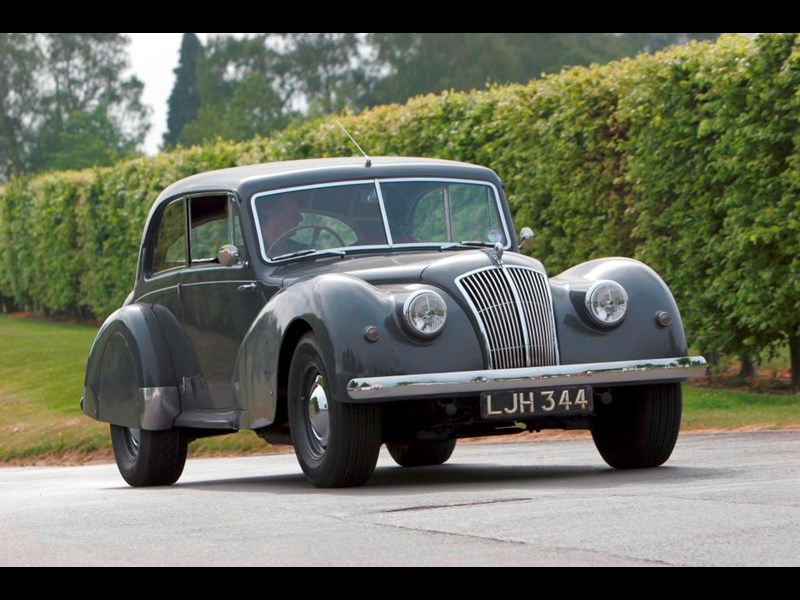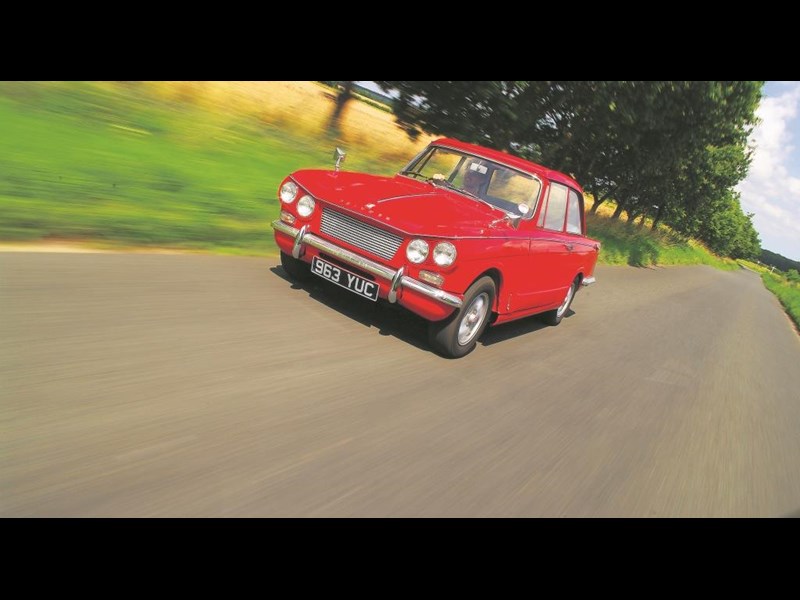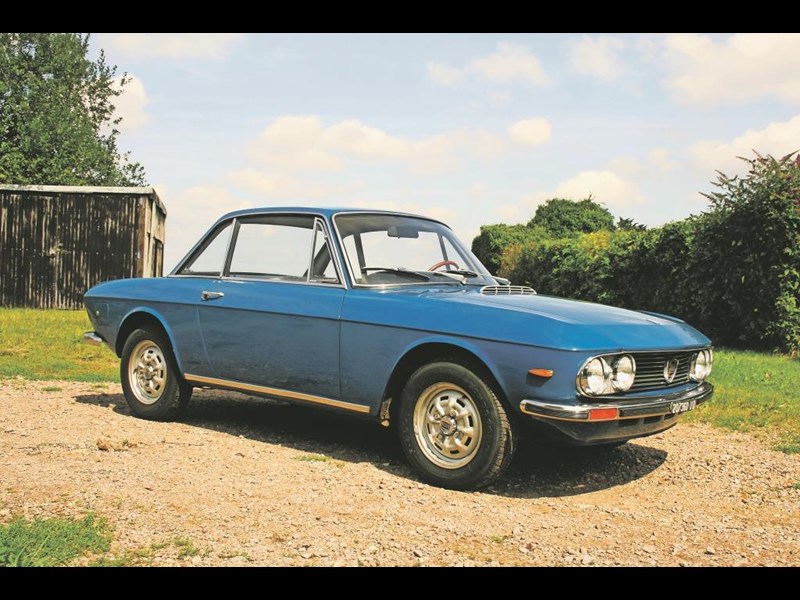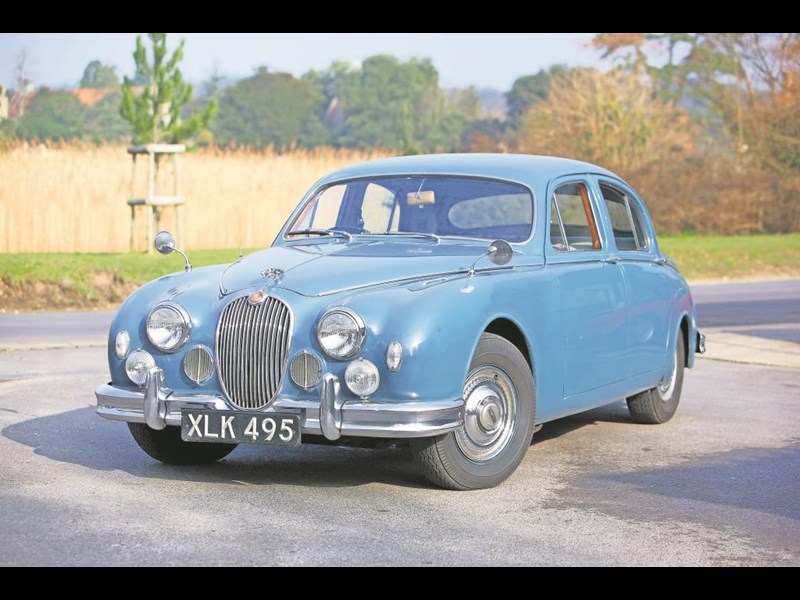Feel like taking on a project for the New Year? Fuzz Townshend chooses his Top 10 classics for you to get down and dirty with...
You've been good all year, painted the house, tidied the garden, fitted a new kitchen and worked hard at the daily grind, and there’s enough left over to snap up a four-wheeled treat, albeit one that is in need of a certain amount of fettling.
However, before putting pen to paper and committing every spare weekend you’ve got to bringing a classic back to life, there are a few things that need to be in order before the new arrival creaks and groans into its new home, and takes root in your life.
Restoration can be tons of fun and very rewarding, but first think of your facilities and then match your car to these. That Jaguar MkX may well be the car of your dreams, but if you try to restore it at your pre-war semi, the project will almost certainly make you and your family miserable as you struggle for space.
Having a garage is ideal, but the car is likely to expand as parts are removed, so an additional workspace such as a shed (or the kitchen table) will be useful for fettling parts and undertaking major unit rebuilds.
The car may not be the only one creaking and groaning, especially by the time you finish the job, so if at all possible, invest in some gear to help you along the way.
Being able to lift the car sufficiently to get right underneath is a real bonus, as are welding and painting facilities, but take care to understand the risks associated with all of these tasks being undertaken in close proximity to your home.
So - get your overalls on, and pull your spanners out. All we need now is a car to restore.
EASY-PEASY RESTORATION
1989-98 Mazda MX-5 MkI / Eunos Roadster
Yeah, I know, I keep banging on about these cars, but there’s a bloody good reason that they’re number one on my list and that is because they are magnificently put together, which means that generally, they come apart magnificently too.
You’re not likely to get away scot-free though. These cars are mostly more than 20 years of age and if there’s no rust in the sills, there’ll probably be some bubbling around the wheelarches, so be prepared to learn to weld, fill and prep’ repaired areas.
You might though be lucky enough to get away with a rattle can when it comes to painting those repairs.
The great thing is that most service items are readily available and there’s a plentiful supply of used parts, including interiors, which can save you a fortune when it comes to trimming.
Don’t bother buying one with a duff engine. There’ll be a better one available for a few quid more.
What to pay: Project £500-£1000; Usable £1500-£3000; Good £2000-£4000; Concours £5000+
Browse Mazda MX-5s for sale
1948-90 Land Rover (Series I to early Defender)
I’ve picked a car with a chassis and there’s a good reason for this. You can get the body off and start from the bottom. It’s all nuts and bolts stuff, especially as, in the case of Solihull’s finest, you can buy a sparkly new chassis for many types, as well as bulkheads and the rest.
However, such extravagance comes at a cost and although decent examples of Series 1 to 3 Landies are seeing a rise in values, you can soon outstrip the worth in parts purchasing, as well as the originality.
For those on a budget, repairs are likely to be the way forward. The chassis and bulkhead can rust prodigiously, especially if the car has seen 20 years use as a farm hack, so do be prepared to get welding. Again a decent MIG set-up should suffice.
Other essential tools are a beefy jack and axle stands and a good quality basic mechanic’s toolkit, equipped with some sturdy knuckle bars and levers. You’re likely to encounter some tight old nuts along the way.
What to pay: Project £700-£1500; Usable £2000-£3000; Good £4000-£5000; Concours £6000+
Browse classic Land Rovers for sale
A LITTLE TOUGHER
1965-80 MGB GT
Yes, a GT. There should be more of it to hold the remainder together, if you catch my drift. What I mean is that it has a solid roof – I assume – so that’s an extra side to the box, which is important because this is the first car on the list that is likely to bite you hard on the backside if you mess things up.
Many MGB GTs have previously seen at least one restoration and you may well find yourself staring wide-eyed at an historical bodge that could see your resto’ going deeper than you at first thought, so be prepared.
I can almost guarantee that you’ll find yourself welding, so budget for and learn to use some decent MIG and TIG equipment. I recommend TIG, as there is likely to be some fine blending of panels going on with, perhaps, some butt welds, although you’ll be able to manage with MIG and joddled edges.
If I’m talking in tongues here, then it’s time to start thinking about acquiring a few extra skills.
Otherwise though, you’re sailing charted waters. Nearly everything is available new.
What to pay: Project £500-£1500; Usable £3000-£6000; Good £7000-£9000; Concours £10,000+
Browse MGB GTs for sale
1959-71 Triumph Herald / Vitesse Saloon
Let’s get one thing straight. No car restoration is that easy, but a Herald or Vitesse at least allows you to unbolt most of the major body components – in theory.
In practice, the parts remaining after the unbolting session may well be evil with rust and many mechanical components will probably be fit only for the bin, but on the plus side, much of what you will need for the restoration is readily available off the shelf.
You’re likely to need to get handy with some welding kit, as the chassis are prone to corrosion and generally, the further towards the outer edges you go, the worse it gets. A decent MIG welding set-up should suffice for these cars and you’ll probably have plenty of old bits of steel to practice the art on.
Other than that, it’s a trolley jack, axle stands, engine hoist and a decent, basic mechanic’s toolkit in A/F sizes.
Many a small, chassis Triumph has been successfully restored at the side of a house so they’re reasonably user friendly.
What to pay: Project £500-£1000; Usable £1000-£1500; Good £2500-£3000; Concours £3000-5000
Browse Triumph Heralds for sale
IT'S GETTING TOUGHER
1978-89 BMW 635CSi
Suddenly, the easy support network enjoyed by the first four choices here starts to melt away. But it hasn’t completely disappeared, it’s just that things become more centred, with fewer specialist suppliers to rely upon and greater complexity in the restoration process, taking in electrical knowhow, tricky interior materials and a finicky fuelling system.
Bodywork repairs can really put skills to the test, with some less common areas of corrosion requiring some bespoke fabrication, although most of this is likely to be hidden and so needn’t cause too many sleepless nights.
At this point, it might be worth thinking about outsourcing some areas of the restoration, primarily the final prep’ and paint. These cars need to look as sharp as their shark-like snouts.
Financial return won’t yet see you retiring early, but these cars are really starting to look like something very special, certainly a keeper.
If you’re determined to do most of the donkey work yourself though, expect to still be at it in 2017.
What to pay: Project £2000; Usable £4000-£8000; Good £8000-£15,000; Concours £15,000+
Browse classic BMWs for sale
1963-76 Lancia Fulvia
Okay then, let’s get stuck into something altogether more determined not to be repaired. With relatively low build numbers and seemingly random production alterations, parts sourcing can be difficult, especially if trawling the used spares markets.
So expect to enter the realm of the production of replacement components, probably nothing more than a linkage here, or a bush there, but production nonetheless. And the run will probably fit only your car.
Italian cars of the 1960s and 70s were built for Italian climes and so unprotected bodywork can provide some challenging moments for the restorer. Measuring and bracing are always vitally important restoration elements when tackling major corrosion, but you’ll now be in the realms of shaping, folding and forming steel sheet.
Achieving a factory finish is going to be much more of a challenge, but hey, at least you’ll have an excuse to visit Italy for spare parts, building up that contacts list, making new friends and giving you a driving destination once the car is finished.
What to pay: Project £5000; Usable £7000-£9000; Good £11,000-£14,000; Concours £15,000-£20,000
Browse Lancia Fulvias for sale
EXTRA LEARNING REQUIRED
1955-59 Jaguar Mk1
If you can find a Jaguar Mk1 project car now, snap it up. I reckon that early post-war sports saloons are soon to slip beyond the reach of mere mortals, if they haven’t already and most of this ilk really are beyond the happy-go-lucky home restorer.
These brutish saloons are full of complex curves and while not the most fiendish of cars to restore, they will require an advanced level of understanding of metal forming, as not all panels are available and to achieve a strong level of finish will take a determined effort.
If not already skilled, I can think of nothing better than enrolling on one of the fabulous courses available to the determined restorer and run by the likes of Leeds College of Technology or Contour Autocraft, among others.
Doing so will lead you towards new levels of ability and in so doing, could draw you towards even greater challenges, but first, don’t forget all of that wood and leather inside.
I recently picked up a decent industrial sewing machine for a couple of hundred quid. You’ll need one if you’re intending stitching together the outer layer of at least a couple of cows, in a colour of your choice.
What to pay: Project £3000-£5000; Usable £10,000-£15,000; Good £18,000-£20,000; Concours £27,000-£30,000
Browse Jaguar Mk1s for sale
1947-56 AC 2 -Litre Saloon
Yes, another ‘sports’ saloon, although perhaps only sporty in comparison to the standard fare of the day, these cars were built in the area for they were ideally suited. The Surrey and Sussex towns and countryside are perhaps the ideal surroundings for these cars, with an occasional commute into London.
However, it’ll probably be a while until you’re getting down to such pleasures, if that is you’ve decided to take on the restoration of one of Thames Ditton’s finest.
Never common, even an ever-so-slightly jaded example could induce an amount of head scratching when it comes to parts supply, beyond ordinary service items. A really down at heel car is likely to take substantially more than a year and your skills in the tin bashing and welding departments will need to be augmented by a knowledge of working with wood.
Even if you have a handsome budget and no need for the daily grind, an AC 2 Litre will become something of a fulltime job, if you intend doing the lot yourself. Delegating tasks will save on time but squeeze the cash, as ever was the case.
Mechanical items are rare. That engine, if salvageable could end up costing a packet in engineering services and you may end up in the realm of making bespoke parts to achieve various functions.
It’s also true that the car may never be worth the amount of time and money lavished on it, but man, you’ll feel like a million dollars driving it.
What to pay: Project £3000-£4000; Usable £5000-£8000; Good £10,000-£13,000; Concours £15,000-£17,000
Browse AC 2-litres for sale
HAIR SHIRT DEPARTMENT
1954-59 Jensen 541R
Now, I really know a thing or two about taking on one of these cars, as I have one sitting in my workshop right now and, having owned it for nearly seven years, I’m still nowhere near finishing it.
Here are brought together virtually every discipline in the car restoration world. fibreglass, aluminium, steel, wood, leather, Perspex, rare parts and design flaws, but perhaps the greatest enemy here is time.
I was 44 and relatively supple when I bought mine. I’m now 51 and even with a workshop and skilled labour to hand, I’m realistically unlikely to be driving the thing for another couple of years, so again I have to say that taking on a project like this should perhaps only be contemplated by those who think they have oodles of time on their hands.
Fibreglass is often thought of as the welding coward’s best friend. I’ve seen plenty of the stuff where it shouldn’t be, but even here, where it is a large part of the outer cladding, working with the material to a high standard involves skill, patience and time. It’s not exactly the kindest material on one’s body either.
The great thing is, take on one of these cars now and you’ll have a brute of a four seater GT at your disposal and you may just manage to be in profit by the end of the project, as prices are beginning to rocket.
What to pay: Project £15,000-£18,000; Usable £26,000-£30,000; Good £35,000-£40,000; Concours £50,000-£55,000
Browse Jensen 541Rs for sale
1955-58 Alvis TC 108/G
Fancy taking on something to test your abilities and facilities to the absolute limits?
Yes?
Well, here you are then, although the only reasons you’ll be doing so are because you have so much spare time on your hands and such wonderful facilities and you’re so looking forward to boasting about your exploits.
With only penny numbers produced and with bodies comprising of aluminium, ash and steel, get ready for some very serious metallurgical knowledge acquisition and timber technology. This is a project for the sake of it, but you will have a beautiful car at the end of it and I can only see these automobiles’ stock rising from hereon in.
In truth, if you’re in the market for such a car, you’ll probably be better off buying a great example and it’s likely that you’ll be in a position to, if you can afford to equip a workshop decently enough to take one on.
I would suggest that only those with many years of restoration experience and the skills to match take on a project anything like this. But just look at what you’ll end up with…
What to pay: Project £22,000-£28,000; Usable £40,000-£50,000; Good £65,000-£80,000; Concours £90,000-£100,000
Browse Alvis TC 108s for sale









